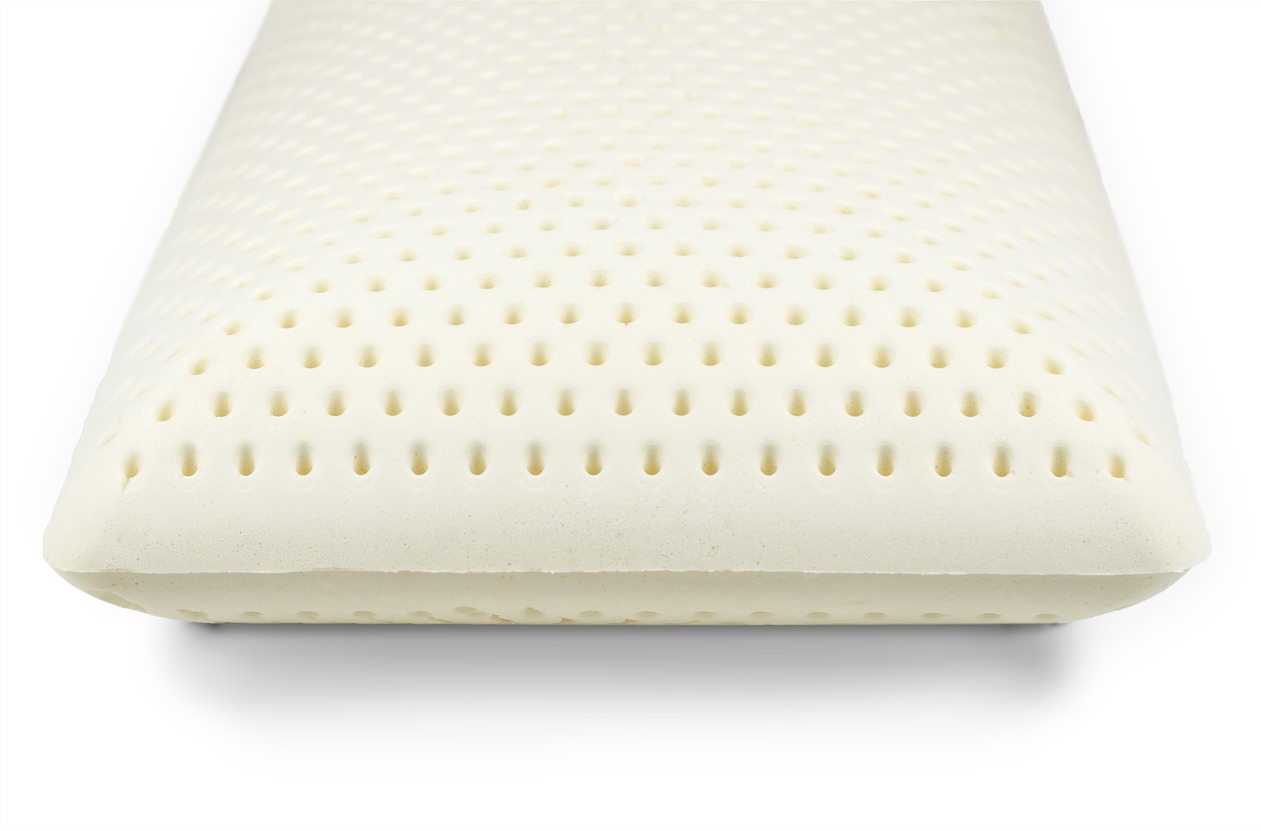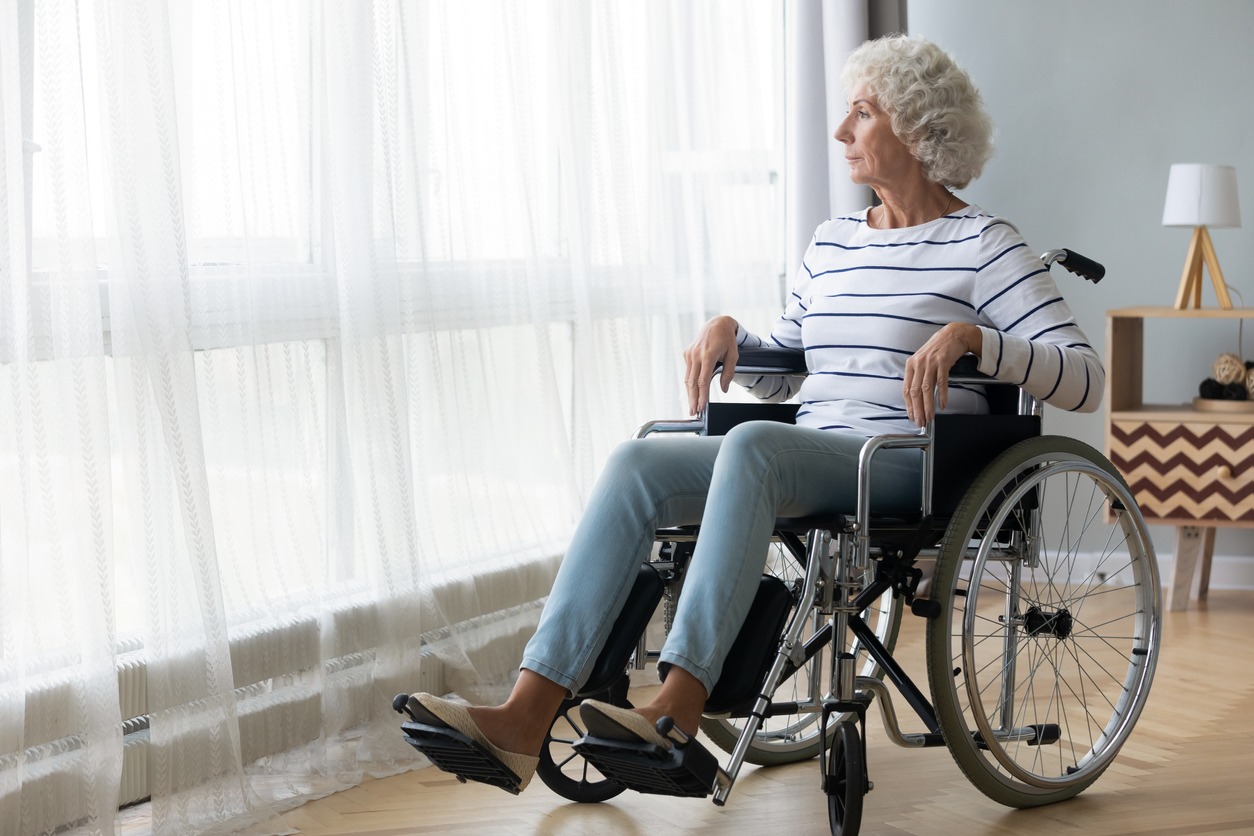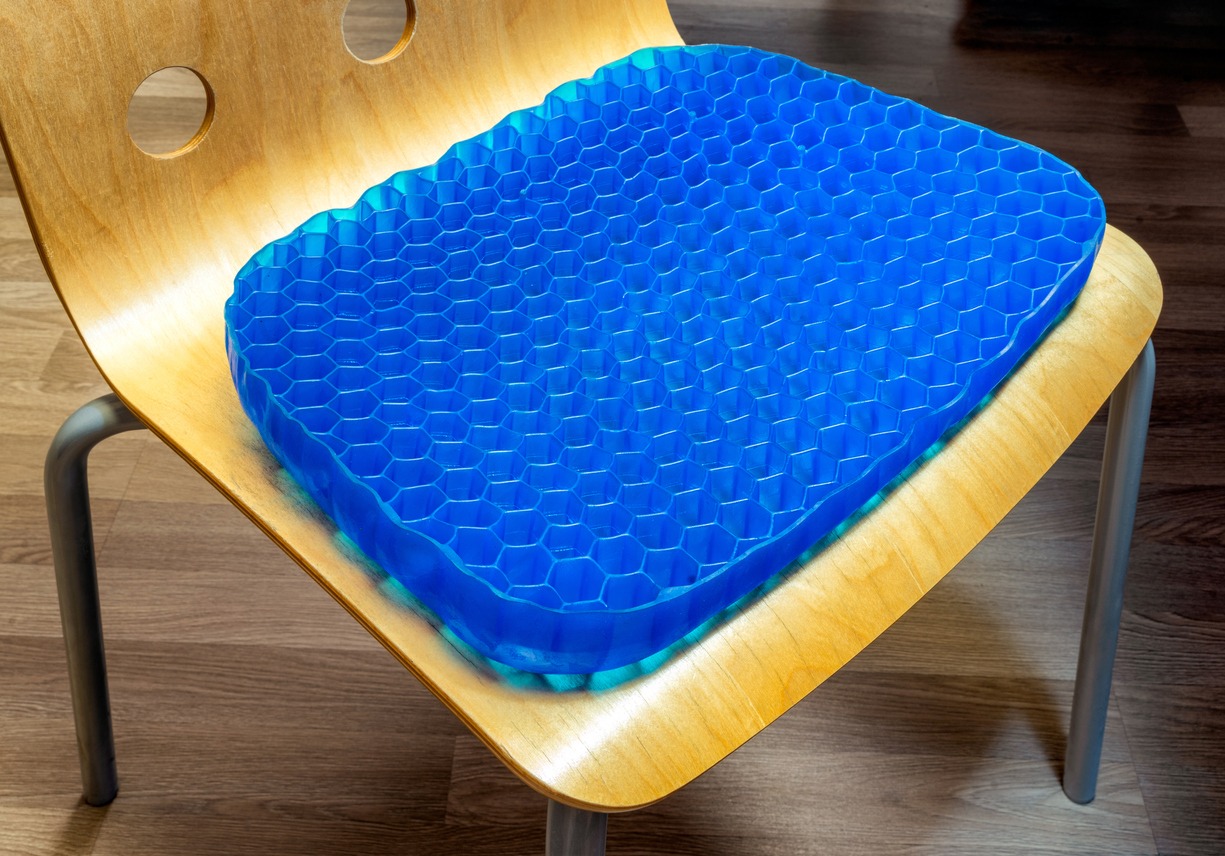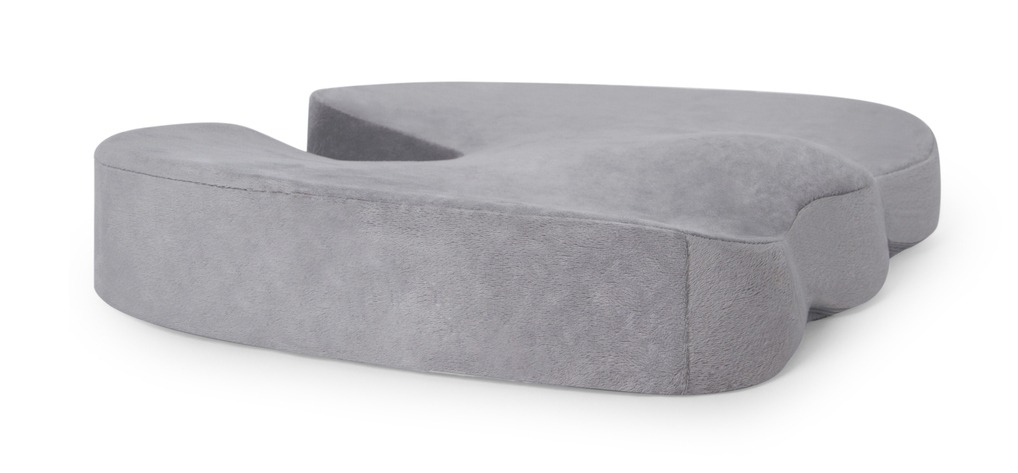Choosing the right wheelchair cushion is essential, whether the patient sits in a wheelchair most of the day or only uses it occasionally when going out. It’s because a wheelchair cushion affects the posture and ability to move freely and helps prevent the development of pressure ulcers. According to the Society of Actuaries, pressure injuries alone cost around $10,700 per case, or between $9.1 billion and $11.6 billion in total every year.[1] Therefore, choosing the proper wheelchair cushion for your loved one is essential to prevent this issue.
There are times when it can be tempting to buy a wheelchair cushion based only on how appealing its material and style look. However, buying a wheelchair cushion without considering how it will work for your patient or loved one could lead to discomfort, lack of support or stability, or even harm to their health. If you are thinking of buying a wheelchair cushion for your loved one, we are here to help you. In this post, we are giving you a guide to buying wheelchair cushions.
Why are Wheelchair Cushions Important?
A wheelchair cushion is a simple cushion designed with characteristics that are appropriate for wheelchairs. They are shaped based on the sizes of various wheelchairs, and they come in different height options, too. But why do you think it is important to use wheelchair cushions? According to Forbes Health, a wheelchair cushion can either enhance or significantly impede an individual’s function. [2] The correct combination of comfort and positioning can make a person comfortable and do the things they want during the day. However, the wrong combination can do the opposite.
Preferably, a wheelchair cushion should help the patient be as comfortable and functional as possible. In addition to comfort, wheelchair cushions are also important as they provide pressure relief, ulcer prevention, shock absorption, and postural alignment, which can all improve the patient’s overall movement and function.
Things to Consider When Buying Wheelchair Cushions
When choosing a wheelchair cushion, keep in mind that there is no perfect cushion. But there is the right type of cushion for your loved one. In order to choose the best wheelchair cushion, it is important to evaluate your patient or loved one’s profile first. Below are some of the needs that you should consider:[1]
Postural Support: It is important to know the level of support that your patient or loved one needs for proper positioning and alignment. You should also determine if there is muscle atrophy.
Skin Condition: You should also determine if your patient or loved one is prone to developing pressure injuries or has delicate or thin skin that easily tears.
Mobility: Know if your patient or loved one will be sitting for long periods if they are self-propelling, and how frequently they will be moving in and out of the wheelchair.
Height: It is also important to consider the height of your patient or loved one to make sure that the thickness of the cushion will not prevent their feet from touching the footrests or floor and that it will still be comfortable and safe for them to move in and out of the wheelchair.
Weight: It is important to know the weight of your patient or loved one in order for you to choose a cushion that is rated to the correct weight capacity. This will help ensure that the cushion you will be choosing can provide optimal stability, retain its shape, and will not bottom out while extending the life of the cushion. This factor is very important for patients that are at higher risk of developing pressure injuries.
After you determine your patient or loved one’s profile, below are the important factors that you need to consider when choosing a wheelchair cushion:[2]
Material
Wheelchair cushions come in different materials, and each of them has its advantages and disadvantages. For instance, cushions made of foam are more affordable, but they can easily lose their shape and deform faster. They also do not have any feature that distributes pressure. Gel cushions, on the other hand, can provide better pressure distribution. However, they need more maintenance. Therefore, it is important to choose a cushion material that will suit the needs of your patient or loved one well.
Stability and Support
The individual needs of patients for stability and support will determine the best wheelchair cushion for them. For example, there are patients who like the pressure relief offered by air cushions. However, the same type of cushion is not suitable for people with balance issues as it can’t provide enough support.
If you are unsure about picking a cushion that offers proper stability and support for your patient or loved one, you may also consider visiting a “seating clinic” at a rehabilitation hospital. Occupational therapists with specialized training and a cushion vendor may let the patient try different cushions and choose the best one for their needs.
Height and Weight
If you choose a wheelchair cushion that is too high, it may impede the patient’s ability to fit their wheelchair under a desk or table. Keep in mind that when choosing a wheelchair cushion, its height should allow the patient to transfer from the wheelchair to the bed or other piece of furniture easily.
Skin Protection
Aside from picking a wheelchair cushion that gives proper pressure relief to prevent pressure ulcers, you also need to consider other factors that may affect skin health. For example, if the patient has incontinence, picking a waterproof and washable cushion is essential to protect their skin integrity. For active wheelchair users, gel cushions might be better as they can alleviate shear force that can damage the skin by causing the patient to slide forward in the chair.
Breathability
Skin breakdown can be affected negatively by body temperature and moisture. Therefore, it is important to pick a wheelchair cushion that has good airflow and breathability to protect the patient from skin issues caused by sitting in a wheelchair for long periods.
Additional Features
If the patient is using a standard sling wheelchair that has a fabric seat and back, it is among the worst chairs for sitting for long periods. It’s because it lacks support, which can cause back pain, pressure, and slouching. With this type of wheelchair, it is better to use a solid seat insert and pair it with a cushion for extra support and stability. It is important to look into additional features that wheelchair cushions offer and weigh in on whether or not those features will be helpful for the patient.
Cost
The price of wheelchair cushions varies depending on the type, materials used, and overall quality. Those that have advanced features like optimal stability and exceptional pressure distribution may cost more. Before buying an expensive one, it is better to consult a doctor first to know the features that the patient needs in a wheelchair cushion to make sure that your money will not go to waste.
Different Materials of Wheelchair Cushions
As we’ve mentioned earlier, wheelchair cushions are not a one-size-fits-all solution, as they should be suited to each patient individually. When choosing a wheelchair cushion, two of the most important considerations are the cushion material and cushion shape. The different options cater to unique conditions, and using the wrong cushion could lead to hazardous positioning for the patient.
To learn more about these, let us first take a look that the different materials of wheelchair cushions that you can choose from:
Foam Cushions
A foam wheelchair cushion can provide structure and stability by conforming to the body of the patient. They are commonly inexpensive, lightweight, and easy to maintain. Foam wheelchair cushions are also available in a wide variety of sizes, densities, and thicknesses. They are ideal for minimal to moderate positioning needs, as they provide excellent comfort, durability, and mild pressure relief for improved sitting tolerance. Most self-propelling patients and those who do not have skin integrity issues may benefit from using foam cushions on their wheelchairs.
Below are a few examples of foam wheelchair cushions to help you pick:
Essential Medical Supply Rehab Cushion: This foam cushion can provide firm seating and pressure relief. It is made for use in wheelchairs, as well as transport chairs, home chairs, and office chairs. It comes in a machine-washable cover. There are also three sizes to choose from for this foam cushion.
Sammons Preston Wheelchair Foam Cushion: This wheelchair cushion features a cotton cover. It is a supportive foam pad that provides support and comfort to the lower body of wheelchair users. The foam is made of a high-density polyurethane. Its cover is durable and removable for easy cleaning. This foam may help users that suffer from lower back, tailbone, and sciatica pain.
Gel Cushions
Gel cushions for wheelchairs feature a gel pocket that is surrounded by a foam base. Some of them may also feature a contoured base to give stability and support better posture, comfort, and cooling effects. Gel cushions may provide better pressure distribution compared to foam cushions. They are usually recommended for patients who have atrophied muscles and those who experience stiffness while sitting for long periods in a wheelchair. The only disadvantage of gel cushions is that they are at risk of punctures and tears, which might result in leakage of the gel.
Below are some examples of gel cushions for wheelchairs to help you choose:
OMCOZY Gel Seat Cushion for Wheelchair: This gel seat cushion has a double-layer gel cushion design. It is thicker and more comfortable to sit on. It can prevent and alleviate different pain symptoms, such as tailbone problems, lumbar strain, sciatica, and degenerative disc disease. It has a honeycomb design and built-in free-flowing air channels that prevent the seat from sweating. It is great to be used on wheelchairs, and it can be cleaned easily.
Drive Medical Skin Protection Gel Wheelchair Cushion: This gel wheelchair cushion has a pressure redistributing design that assists in the prevention, treatment, and management of pressure ulcers. The core of this cushion is made of viscous gel encased in a fire-retardant polyurethane foam shell. The top cover of this cushion is removable and replaceable.
Helishy Gel Seat Wheelchair Cushion: This gel wheelchair cushion is made of premium gel material that will not irritate the skin. It is designed according to the curve of the human body, which fits perfectly to the buttocks curve. It is soft but does not lose its support force. It also disperses the pressure on the whole buttocks and thighs. It has a cooling structure that increases air circulation, making the temperature stay neutral instead of heating to keep the patient cool even for longer periods. It also comes with a magnetic anti-slip cloth cover.
Air Cushions
Air cushions for wheelchairs contain cells or chambers that are inflated with air. These cushions are lightweight and best for pressure relief and shock absorption. Most of the time, a bulb inflator is used to pump the cells with air to the desired comfort level of the patient. These individual air cells work as springs and adjust to the anatomical contours of the user. By shifting independently with the patient’s movements, the cells help reduce friction against fragile skin.
Below are a few examples of air cushions for wheelchairs to help you pick:
Premium Air Inflatable Seat Cushion for Wheelchairs: This air cushion provides comfortable and stress-free sitting with a gentle layer of air that aids in eliminating pressure points. It features small ring-shaped holes to ensure that the weight of the body is distributed evenly without putting pressure on the lower back. It comes with a vinyl cover that is hygienic and easy to clean. It is made from hypoallergenic and hospital-grade materials.
Vive Alternating Air Pressure Seat Cushion: This alternating air cushion can redistribute the patient’s weight while seated. It helps relieve painful pressure caused by prolonged sitting in a wheelchair. The pneumatic cushion also helps in preventing pressure sores and ulcers when seated in a wheelchair. It features six alternating cells that can support the seat, thighs, and lower back. There is also a static setting with a timer and three alternating modes for customizable comfort. It is sized to fit standard and bariatric wheelchairs.
Roho Mosaic Inflatable Wheelchair Seat Cushion: This is a light and easily portable wheelchair cushion. It features easily inflated polyvinyl interconnected air cells, a non-skid cover, a repair kit, instructions, and a hand inflation pump for easy setup. It is designed to match the body shape of the patient and adapt to every movement to reduce the risk of injury to the skin, even when sitting for a longer period.
Combination / Hybrid Wheelchair Cushions
There are also wheelchair cushions that combine air, foam, and/or gel elements. They are made from more than one weight-bearing material and are mostly used by patients who are paralytic or those who are unable to control the pressure exerted from a part of their body. Below are some examples of combination or hybrid wheelchair cushions to help you choose:
ROHO Hybrid Elite Single Compartment Cushion: This hybrid wheelchair cushion is suitable for patients who have a history of skin or soft tissue breakdown or any stage pressure ulcer, skin grafts, or skin surgery. It is a combination of foam and air cushions for optimal comfort and support.
Everlasting Comfort Gel Memory Foam Wheelchair Seat Cushion: This is a gel-infused memory foam seat cushion that can distribute weight evenly and provide a balanced support system for the lower body while sitting. It features strategically placed ventilation holes that allow the patient to sit comfortably even through extended sitting sessions. It can retain its shape even with daily use.
Different Shapes of Wheelchair Cushions
In addition to the materials that wheelchair cushions are made of, another important factor to consider is the shape of the cushion. When choosing the shape type of a wheelchair cushion, you need to consider the mobility and positioning needs of your patient or loved one. It’s because skin breakdown can be prevented by picking a cushion type that positions the patient comfortably.
To further help you, below are the different shapes of wheelchair cushions that you can choose from:
Saddle-Shaped Wheelchair Cushions
Saddle-shaped cushions are a great choice for seniors and patients who have hip rotation or a lack of abduction control. These cushions can provide pelvic stability and control for patients. Below are a few examples of saddle-shaped wheelchair cushions to help you pick:
Comfort Saddle Anti-Thrust Wheelchair Cushion: This wheelchair cushion is made of polyurethane. It has a high-quality ergonomic design that provides proper leg alignment. Its contoured leg abductors and pommel increase the seating area for better weight distribution and pressure relief. Its tapered sides follow the natural leg angle of seated patients. It also has a firm base foam for structure and support.
Comfort Company Saddle Anti-Thrust Cushion: This saddle anti-thrust cushion gives anterior support. It has two layers of premium high-resiliency foam and a waterfall front that reduces pressure. It also comes with a removable solace cover that is waterproof. It is a comfortable wheelchair cushion that can provide patients optimal support.
Pommel-Shaped Wheelchair Cushions
This wheelchair cushion shape is best for seniors or patients who tend to cross or buckle their knees. These can help reduce internal rotation contracture and skin shear. Below are some examples of pommel-shaped wheelchair cushions to help you choose:
NYOrtho Coccyx Pommel Gel-Foam Cushion: This wheelchair cushion is designed to offload tissue under the coccyx to eliminate the pressure. It also helps keep knees separated to prevent hip rotation. It comes with a breathable and removable cover that is water-resistant.
Foam Wedge Seat Cushion with Pommel: This is designed as a wheelchair pommel cushion. It promotes proper hip positioning by keeping the knees separate. The wedge design also keeps the patient from sliding forward, which may also help improve posture. It is a high-density foam pad that increases the stability of the chair and allows maximum comfort.
Wedge-Shaped Wheelchair Cushions
A wedge-shaped wheelchair cushion is designed to help position seniors and patients with a posterior pelvic tilt to stay back in their seats. These are triangular in shape and can help prevent back pain by promoting better posture. Below are some examples of wedge-shaped wheelchair cushions to help you choose:
Drive Medical Wedge Cushion: This wedge seat cushion has a waterproof vinyl bottom. It is ideally used to prevent patients from sliding forward. It is made of high-density foam that increases comfort and stability. Its foundation reduces pressure, and it has a waterproof top cover.
MOBB Wheelchair Wedge Seat Cushion: This wheelchair cushion can ensure a more comfortable seating position. It is best for patients who are recovering from hip surgery. It can keep the spine naturally balanced by raising the hips higher than the knees.
Anti-Thrust Wheelchair Cushions
Wheelchair cushions that are anti-thrust are used to help mitigate slides for seniors and other patients who are constantly moving in their wheelchairs. These can prevent the patient from sliding as it features a high-front and low-back cushion design. Below are some examples of anti-thrust wheelchair cushions to help you pick:
ProHeal Gel Anti-Thrust Seat Cushion: Forward-sitting is one of the issues often encountered by people confined to a wheelchair. But with the use of this cushion, this problem can be solved. This cushion can give relief from sacroiliac, lumbar, and back pain. It may also help prevent pressure sores. It is made from high-density polyurethane memory foam that is durable. Aside from wheelchairs, this seat cushion can also be used on other types of chairs.
Sammons Preston Anti-Thrust Cushion: This anti-thrust wheelchair cushion is made of high-density foam and has one gel chamber to better reduce the pressure being felt by the patient. It is made with a 5-inch high anterior surface and a 3-inch high contact area to remove the risk of an anterior pullout of the pelvis. It helps with forward sliding, bad posture, and poor pelvic alignment when seated in a wheelchair.
Conclusion
Wheelchair cushions are indeed essential as they provide more comfort and support for your patient or loved one. It is also important to know how to choose the best wheelchair cushion that will meet the needs and preferences of the patient. When you are able to pick the right one, you can ensure a safe and comfortable experience whenever your patient or loved one uses their wheelchair. We hope this post helped you learn more about buying wheelchair cushions.
References
[1] AliMed, E. (2018, August 10). How to choose the right wheelchair cushion. AliMed. Retrieved February 7, 2023, from https://www.alimed.com/how-to-choose-the-right-wheelchair-cushion-blog/
[2] Hipp, D. (2023, January 26). A guide to the best wheelchair cushions. Forbes. Retrieved February 7, 2023, from https://www.forbes.com/health/healthy-aging/best-wheelchair-cushions/






